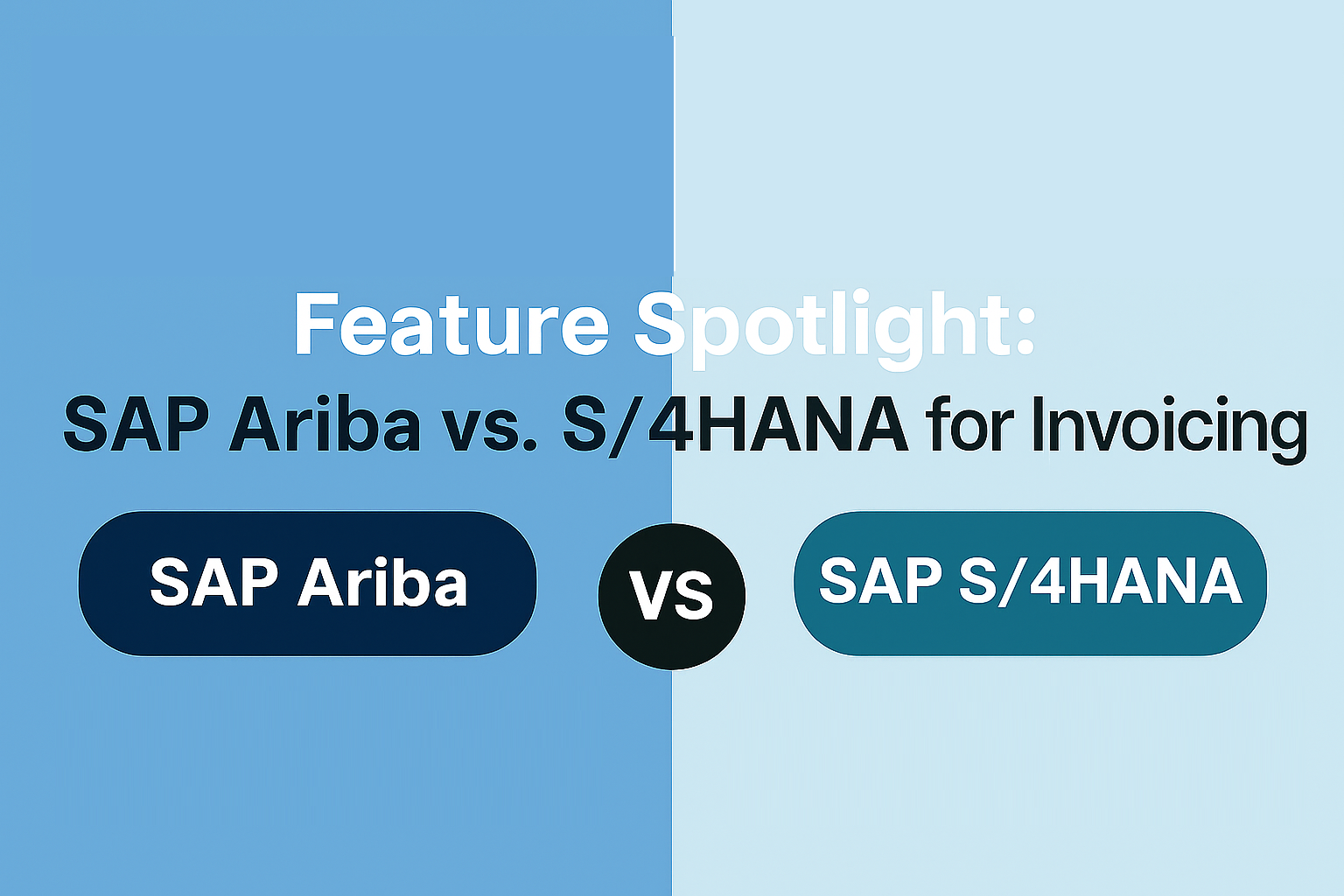Feature Spotlight: SAP Ariba vs. S/4HANA for Invoicing
In the ever-evolving landscape of enterprise invoicing, SAP offers two powerful tools: SAP Ariba Invoicing and SAP S/4HANA Invoicing. Both solutions provide significant value, but each has its own strengths depending on business needs, complexity, and scale.
Let’s take a closer look at how these two systems compare and what teams should consider when implementing or optimizing their invoicing process.
Key Feature Comparison
| Feature | SAP Ariba Invoicing | SAP S/4HANA Invoicing |
| Supplier Collaboration | Excellent (via Ariba Network) | Basic (without add-ons) |
| Customization | Limited | High |
| E-Invoicing Compliance | Global support | Needs extensions |
| Cost | Subscription + transaction | Included in S/4 license |
| Integration Effort | Needs sync with S/4HANA | Native |
| Analytics | Moderate | Real-time, advanced |
| Invoice Automation | High | Depends on config/customization |
SAP Ariba Invoicing – Pros & Cons
Pros:
- Supplier Collaboration: Ariba offers seamless integration with suppliers for PO-flip, e-invoice submission, and real-time status tracking.
- Regulatory Compliance: Strong global support for e-invoicing regulations like PEPPOL and LATAM mandates.
- Touchless Processing: Automated 3-way matching and validations streamline AP operations.
- Exception Handling: Errors are flagged early via rules engines, reducing downstream issues.
- Cloud Accessibility: Ideal for global operations with scalable cloud infrastructure.
- Supplier Self-Service: Suppliers can view payment status, submit invoices, and manage exceptions independently.
Cons:
- Additional Licensing Costs: Includes Ariba Network fees and per-transaction charges.
- Limited Customization: Configuration-heavy for custom validations.
- Integration Dependency: Requires tight integration with S/4HANA or ECC for complete financial processing.
- Supplier Onboarding Challenges: Training and onboarding, especially for SMEs, can be resource-intensive.
SAP S/4HANA Invoicing – Pros & Cons
Pros:
- ERP Integration: Native connection with FI, MM, and other modules enables real-time updates.
- Workflow Capabilities: Advanced workflows allow for flexible approval chains and escalation.
- High Customizability: Extendable through BAdIs, Fiori apps, and user exits.
- Non-PO Invoice Handling: Robust processing for service and non-PO invoices.
- Advanced Analytics: Fiori dashboards and CDS views enable real-time AP performance tracking.
Cons:
- Limited Supplier Interaction: No built-in portal without add-ons like Ariba.
- e-Invoicing Requires Add-Ons: Needs SAP Document Compliance for regulatory coverage.
- Complex On-Premise Deployment: May require significant effort and investment unless using the cloud version.
- Delayed Supplier Visibility: Suppliers may not have invoice/payment status visibility unless a portal is integrated.
Both SAP Ariba Invoicing and S/4HANA Invoicing offer distinct advantages, and the right choice depends on your operational priorities. Ariba is ideal for businesses with a strong supplier network and global reach, while S/4HANA excels in tightly integrated, customizable ERP environments.
At Groupsoft, our SAP team continues to explore and implement best-fit solutions for our clients—optimizing performance, ensuring compliance, and delivering value.




Post Comment